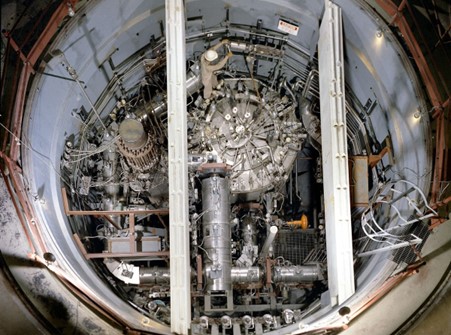History was made in December when scientists at Lawrence Livermore National Laboratory’s National Ignition Facility successfully produced a nuclear fusion reaction resulting in a net energy gain. And a Washington-based start-up backed by hundreds of millions of dollars of venture capital announced a few months later that it expects to have a fusion power plant built within five years. Steve Krahn, a specialist in nuclear energy technology and professor of the practice of nuclear environmental engineering at Vanderbilt, is optimistic about the possibilities surrounding nuclear fusion. Krahn has 45 years of technical and project management experience in government, private industry, and the military. He’s part of an initiative with the Electric Power Research Institute (EPRI) to perform a safety analysis task for commercial fusion power. Krahn recently took time to talk about this new clean energy power source and its future impact, among other things.

The breakthrough in nuclear fusion possibly signals its use as a bountiful new source of clean energy. What do you make of this news, and what does it mean for the average person?
The announcement by the Secretary of Energy marked the first time that a fusion reaction had produced as much energy as it took to produce and confine the reaction, for the short period of the experiment. This is an important milestone in fusion R&D. It provides an early indication that useful energy from fusion is feasible.
Can you give an overview of the nuclear safety design methodology used by Southern Company and TerraPower that led to them receiving an award from the Electric Power Research Institute (EPRI)?
Over the past five years Vanderbilt, working under a series of grants from EPRI that amounted to just under $1 million, developed an incremental approach to the development of the safety analysis for novel nuclear technologies. The methodology also received both funding and in-kind support from Southern Company and TerraPower, and was used to perform safety analyses associated with its reactor and facility design efforts. And, more recently, the methodology was used to support the design and operations of the Integrated Effects Test, which is an R&D platform to perform thermal-hydraulic testing to support design of the Molten Chloride Fast Reactor (MCFR)—under development by Southern Company and TerraPower.
What is your reading of how the public perceives nuclear power today? Do most people still see it as dangerous — or a potential source of sustainable energy?
I believe that support for nuclear power, as part of a balanced clean energy portfolio, is strong and is continuing to grow. There is a hazard associated with nuclear power. However, it is well-understood and closely regulated in the United States by the Nuclear Regulatory Commission (NRC) and the US Department of Energy (DOE).
What advances, if any, have there been in terms of processing and storing nuclear waste?
Spent Nuclear Fuel (SNF) from the present generation of nuclear power plants in the United States is safely stored in dry cask storage facilities at commercial reactor sites. The Department of Energy (DOE) is tasked by Congress with the long-term mission of appropriately managing this SNF. DOE is initiating a consent-based siting process to begin to work with communities that may be interested in hosting a Consolidated Interim Storage Facility for SNF, which would allow nuclear power plant operators to ship their SNF off-site and allow DOE to take possession of the SNF, as they are required to by the Nuclear Waste Policy Act of 1987. This process, if successful, will mark an important milestone in addressing this nuclear waste issue.
What role do you see nuclear power playing as the U.S. and other countries look for sustainable energy sources in the foreseeable future?

Nuclear power is one of a set of clean energy options, with wind, solar, and hydro, that can allow the U.S. to move away from power sources that produced CO2 during operations. Nuclear and hydro are the only two of these options that are not intermittent in nature, and thus play a very important role in that mix.
What topics are your students most interested in these days?
Ensuring that new power sources have the lowest feasible impact on the environment. I believe they understand that electricity is a vital part of our economy, but desire that its impact on the environment be minimized.
How do you connect your work in industry and government to your lessons in the classroom?
I bring the cutting-edge research done by the Consortium for Risk Evaluation with Stakeholder Participation (CRESP) and my Nuclear Environmental Engineering Research Group into updates to my courses and the guest lectures that I provide for other professors; recently to an energy-focused undergraduate course in CEE, and to an Energy Law course in the Law School. I am also working with/advising the Vanderbilt Fusion Project.